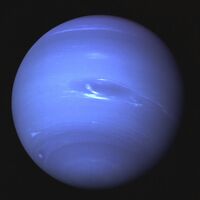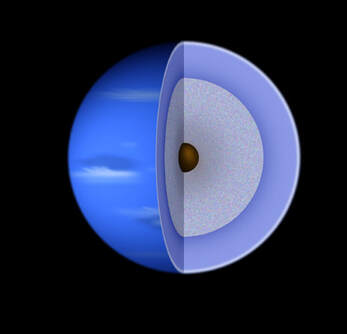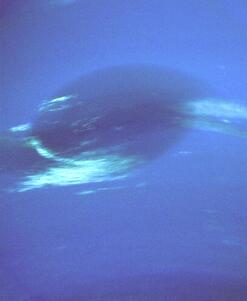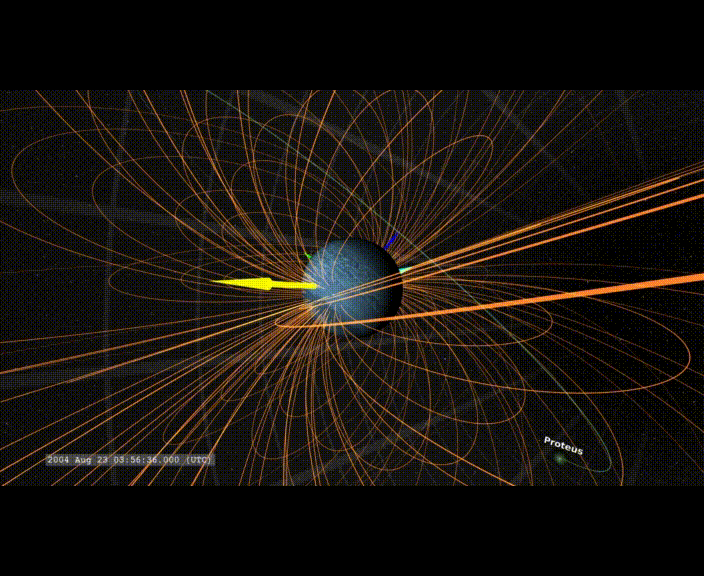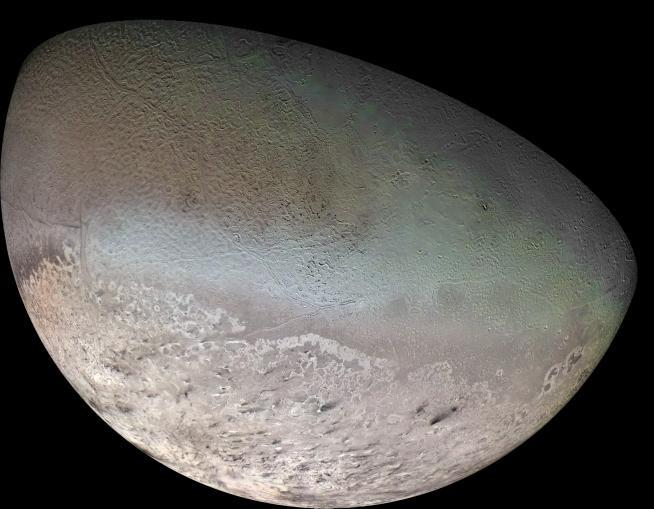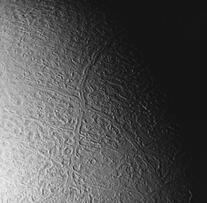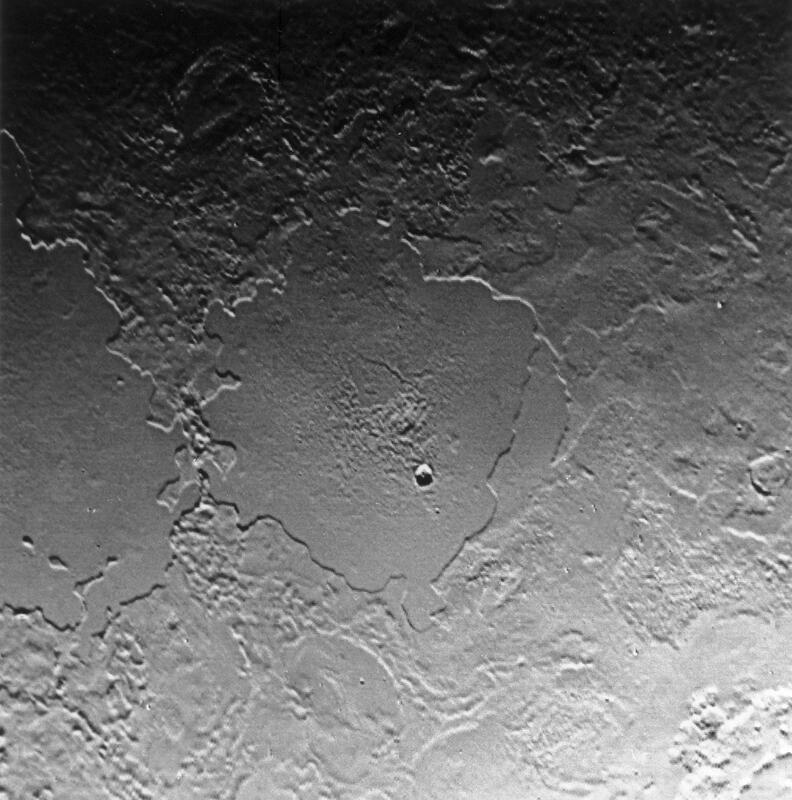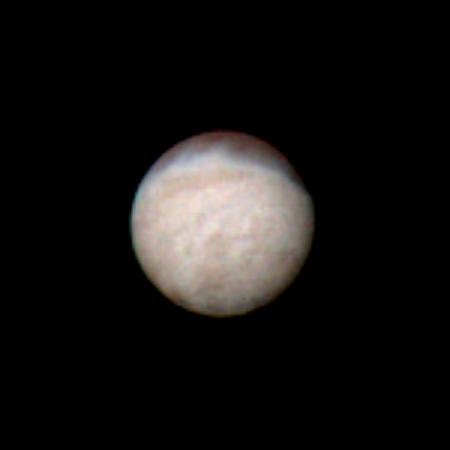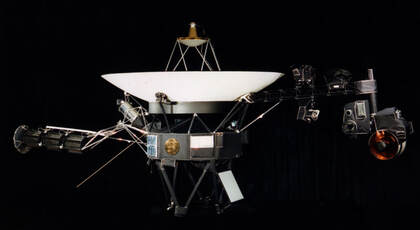NEPTUNE
|
Formation Neptune is the most distant known planet in the solar system. Neptune shares many similarities with Uranus. It too was formed about 4 billion years ago, when gravity pulled together gas and dust swirling around the Sun. Neptune likely formed closer to the Sun and later moved to its current orbit. It is considerably denser than Uranus and is second only to Jupiter in its gravitational strength. Technically, it is a gas giant although it is often referred to as an "Ice Giant".
|
|
Structure, Atmosphere and Magnetosphere There has been only one interplanetary probe to Neptune, so, like Uranus, our factual knowledge is limited, and we are more dependent on theory and modeling. Neptune is comprised mostly of hydrogen and helium, like the planet Uranus. These two gases account for at least 80% of its total mass. The gaseous atmosphere extends 10-20% of the way to the center. At the lower reaches of the atmosphere, the concentration of methane, water and ammonia increases. As pressure increases towards the planet’s center, gases become liquid, and the water becomes hot “super-ionic ice.” This exotic ice (Ice 18) has a crystal structure, but behaves like a fluid. The methane molecules may break down under the extreme pressure (100,000 to 1,000,000 times the atmospheric pressure on Earth), releasing carbon atoms which may reform as diamonds (crystallized carbon) raining down toward the core. Neptune likely has a rocky core at its center, equivalent to about 1.2 Earth masses.
|
|
Neptune’s outer atmosphere is composed almost entirely of hydrogen and helium, with trace amounts of methane, giving Neptune its blue colour. At deeper levels ammonia, hydrogen sulphide and hydrocarbons are found.
Neptune is encircled by a faint set of five rings. Two are significantly brighter than the other three. They formed from dust and debris, rather than ice as is the case for Saturn. Neptune’s climate has many extremes. It is the windiest of all the planets, with recorded wind speeds in excess of 2,000 km/h. Winds in the upper atmosphere travel in the same direction as the planet’s rotation, but in the reverse direction at lower altitudes. Neptune shows cyclonic super-storms in the form of dark spots on the upper cloud decks. The Great Dark Spot is an Earth-sized example. These storms persist for months or years, whereas Jupiter’s Great Red Spot has persisted for centuries. |
|
Neptune has an axial tilt of 28.3 degrees and so, like Earth, it experiences seasons. Its magnetic poles are offset by 47 degrees relative to the spin axis. It is odd that both ice giants have steeply inclined magnetic axes. The reason for this is as yet unknown.
The magnetism is thought to originate from a thin shell of electrically conductive ices deep in Neptune’s interior. The large offset between the magnetic poles its spin axis results in a complex and constantly changing magnetosphere, like that observed on Uranus. |
Neptune, having the second largest gravitational pull among the planets, exerts a profound effect on Kuiper Belt Objects. The Kuiper belt is a band of icy objects, beginning at Neptune’s orbit (4.5 billion km.) and extending outward to approximately 8.3 billion km. They range in size from one kilometer to much larger objects classed as dwarf planets (500-2000+ km.). Pluto is now considered to be a very large, if not the largest, Kuiper Belt Object. Neptune’s strong gravity creates regions of instability and gaps in the Kuiper belt. At the scale of the Lethbridge Solar System model, the Kuiper belt would end a little beyond Picture Butte or, on the opposite side of the “Sun”, in Welling.
Moons As of 2024, Neptune has 16 moons but only one major moon, Triton, discovered in 1846. It is the only large moon in the solar system showing a retrograde orbit, meaning that it revolves around the planet in the opposite direction that the planet rotates. It is slightly larger than Pluto and is of similar composition. Triton may be a captured Kuiper Belt Object.
Triton is geologically active and has a thin atmosphere. The surface crust is frozen nitrogen covering a water ice mantel and a solid rocky/metallic core. The surface features are complex, including rift valleys, outcroppings, furrows, plains and plateaus. There are relatively few impact craters, owing to the active geysers. Triton has yielded the coldest recorded temperatures in the solar system- a mere 37 degrees above absolute zero. Despite this, there is sufficient rocky material in the core to produce some heating through radioactive decay. This means that some of the water in the mantle could be liquid and may provide conditions necessary to support life.
|
Missions To date, there has been only one mission to Neptune, Voyager 2 in 1989. This mission included a close flyby of Triton. Voyager 2 (shown) studied characteristics of the magnetosphere, weather patterns and discovered six minor moons. It also established a more accurate estimate of Neptune’s mass, which ultimately provided evidence against the idea that there is an undiscovered planet beyond Neptune’s orbit.
|

